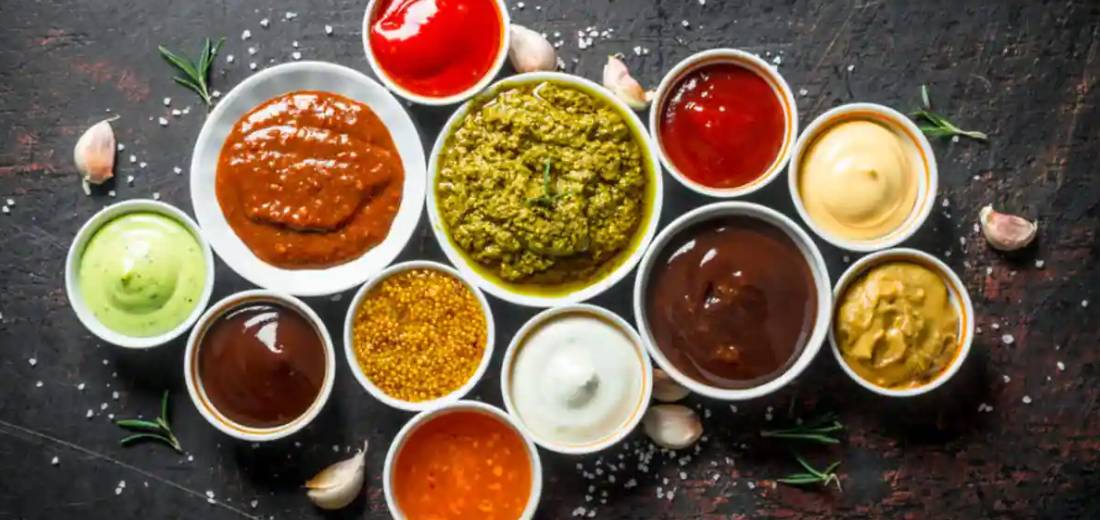SHAD RASA OR THE SIX TASTES OF AYURVEDA
- MADHURA RASA (SWEET JUICE)
- AMLA RASA (SOUR JUICE)
- LAVANA RASA (SALTY JUICE)
- KATU RASA (PUNGENT JUICE)
- TIKTA RASA (BITTER JUICE)
- KASHAYA RASA (ASTRINGENT JUICE)
MADHURA RASA (SWEET JUICE)
When the first taste left on the tongue is sweet, then that rasa is known as Madhura Rasa or Sweet Taste. This juice is endowed with aliphatic, cold, and guru qualities. Sweet juice is favourable for the body from birth. It nourishes the Saptadhatu (plasma, blood, muscle, fat, bone, bone marrow and reproductive fluid), increases energy, and makes the five senses and the mind happy and pure. It is strong and beneficial for hair and tone. Madhura Rasa is a Kapha enhancer and Vata destroyer.
It has many qualities, but excessive consumption of this alone can lead to obesity, lethargy, excessive sleepiness, heaviness, disliking for food, etc. Later on, there can be diabetes, weakness of fire (digestive disturbance), pratishyaya (cold), kapha diseases.
Examples of Madhura Rasa -Jaggery, Wheat, Rice, Honey, Sugar, Dairy, Cereals, Dates, Pumpkins, Maple Syrup, etc.
AMLA RASA (SOUR JUICE)
Amla Rasa is present in sour-tasting things. Amla rasa increases interest in food, increases fire, gives sharpness, stimulates the mind, strengthens the senses, benefits the heart, and helps in the digestion of food. It further calms Vata and increases Pitta and Kapha. This juice has short, warm, aliphatic properties.
Excess consumption of Amla rasa sours the teeth, enlivens the body, contaminates the blood, makes the body sluggish, increases bile and causes irritation in the body parts.
Examples of Amla Rasa -Lemon, Citrus Fruits, Pickle, Tamarind, Berries, Yoghurt, Tomatoes, Vinegar, Salad Dressing, etc.
LAVANA RASA (SALTY JUICE)
Lavana means salt. In Ayurveda, Panch Lavana means five types of salt. Lavana Rasa is aliphatic and has warm properties. These types of food are digestive and cure the problem of constipation. Lavana Rasa purifies the internal passages of the body and generates interest in food.
Consuming more of this juice can irritate pitta, increases blood pressure, increases thirst, makes cognition (unconscious), reduces virility, and premature greying of hair can also occur. It brings baldness, besides causing diseases like Amlapita (acidity), Vatarakta (Gout), and Indralupta (Alopecia) can also be caused by the excess of Lavana Rasa.
Examples of Lavana Rasa -Salt (Table Salt, Rock Salt, Black Salt), Black Olives, Soya Sauce, etc
KATU RASA (PUNGENT JUICE)
Katu rasa refers to a spicy taste (like chilli). This juice purifies the mouth, increases fire, brings phlegm from the nose and tears from the eyes, stimulates the senses, and destroys inflammation, abyss, pain, affection, sweat, and stool. Also, it destroys worms, breaks up frozen blood, and clears passages. Katu Rasa calms phlegm and is short, warm, and dry.
If consumed in excess, it destroys masculinity, produces guilt, weakens the body, brings darkness before the eyes, and burning in the throat and fever. Excess to air and fire qualities causes dizziness, burning, tremors, stinging pains, and Vata disorders.
Examples of Katu Rasa -Peppers, Chillies, Garlic, Black Pepper, Onions, Cayenne, Raddish, Ginger, Cloves, Salsa, Mustard, etc
TIKTA RASA (BITTER JUICE)
Tikta rasa means bitter taste, similar to that of neem leaves. Tikta juice has dry, cold and minor qualities. Despite being distasteful in itself, it generates interest in food, so it is an astringent, anti-venom, anti-worm, and anti-sedation. It calms thirst and removes fever. It dries marrow, lymph, sweat, urine, faeces, bile and phlegm.
If taken in excess, it exploits the Saptdhatus and reduces the body's grossness, improves cognition, causes dizziness, dries the mouth, and produces diseases related to Vata.
Examples of Tikta Rasa -Green and Leafy Vegetables, Kale, Yellow Vegetables, Broccoli, Bittergourd, Celery, Beets, Teas (Black, Green, and Herbal), etc.
KASHAYA RASA (ASTRINGENT JUICE)
Kashaya rasa means astringent taste. This juice is full of dry, cold and guru qualities. It is samshaka (to pacify irritable doshas at their place), sangraha (collector of impurities metal), and destroys bile and phlegm.
Using it in large quantities dries the mouth, afflicts the heart, inflates air in the stomach, and brings blackness to the body. It causes diseases like Pakshawadh (Paralysis), Ardit (Facial Paralysis) etc.
Examples of Kashaya Rasa -Tea, Coffee, Unripe Bananas, Pomegranates, Green Beans, Okra, Lentils, Broccoli, Green Apples, Pears, Alfalfa Sprouts, Cruciferous Vegetables, etc.


